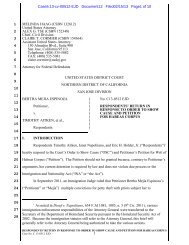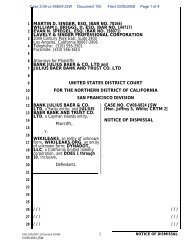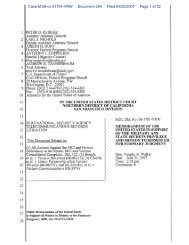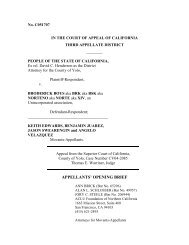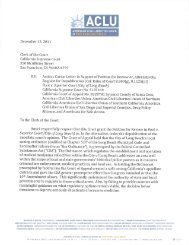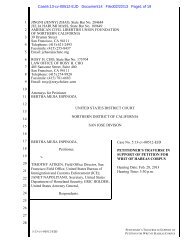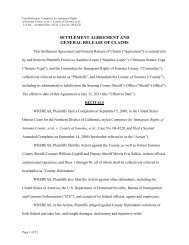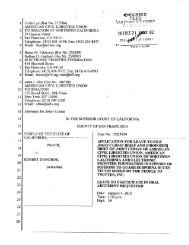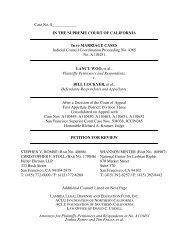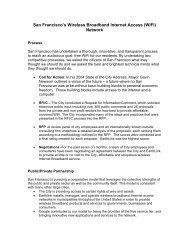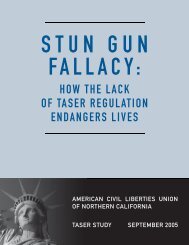Public Safety Realignment - ACLU of Northern California
Public Safety Realignment - ACLU of Northern California
Public Safety Realignment - ACLU of Northern California
- No tags were found...
Create successful ePaper yourself
Turn your PDF publications into a flip-book with our unique Google optimized e-Paper software.
called “post-release community supervision.” 19 Individuals who have completed their sentencesand are released from a state correctional facility on or after October 1, 2011 whose currentconvictions were for a “non-non-non” <strong>of</strong>fense and who are not deemed high-risk sex <strong>of</strong>fendersare placed under the supervision <strong>of</strong> a county agency (designated by each county’s Board <strong>of</strong>Supervisors) 20 instead <strong>of</strong> being supervised by a state parole agent. 21 (Technical violations by anyindividual on supervision, whether by a county or state agency, will be served in county jail.Only new felony <strong>of</strong>fenses will return an individual to state prison.) Again, AB 109 is prospectiveonly, and therefore anyone on parole before October 1, 2011 remains under state jurisdictionuntil they are discharged. 22AB 109 required each <strong>of</strong> <strong>California</strong>’s counties to assemble an executive committee <strong>of</strong> its LocalCommunity Corrections Partnership (LCCP), comprised <strong>of</strong> the county’s probation chief, sheriff,district attorney, public defender, presiding judge, a police chief and a public health or social servicesdepartment head appointed by the Board <strong>of</strong> Supervisors. 23 By October 1, 2011, each county wasexpected to adopt a formal realignment implementation plan, written by its LCCP executivecommittee and adopted by its Board <strong>of</strong> Supervisors, explaining how the county planned to allocatefunds and manage the new class <strong>of</strong> individuals now under its supervision. As <strong>of</strong> late February, 53counties had made plans publicly available. 24 In many counties, the LCCP continues to hold regularpublic meetings to discuss implementation.The success <strong>of</strong> realignment implementation willlargely depend upon the ability <strong>of</strong> the LCCPs andother local agencies to collaborate effectively, andupon their combined willingness to abandon pasthabits in favor <strong>of</strong> approaches that are shown towork and be cost-effective. Joint planning andimplementation, with close coordination andshared buy-in among probation, the sheriff, thedistrict attorney, the public defender, courts andcommunity-based organizations should determinewhat policies are adopted, how they areimplemented and to what extent they are revised infuture years based upon data-driven criticalanalyses <strong>of</strong> their results. No one agency will beresponsible for success, but just one uncommitted agency can lead the county to failure.Putting Evidence into Practice<strong>Public</strong> safety realignment represents a sea-change in ways much more significant than simplykeeping more people convicted <strong>of</strong> low-level, non-violent felony <strong>of</strong>fenses in local rather than in statefacilities. AB 109, as expressed by the statute’s legislative findings and declarations section, 25 aimsto strengthen “locally run community-based corrections” to “improve public safety outcomes among8



